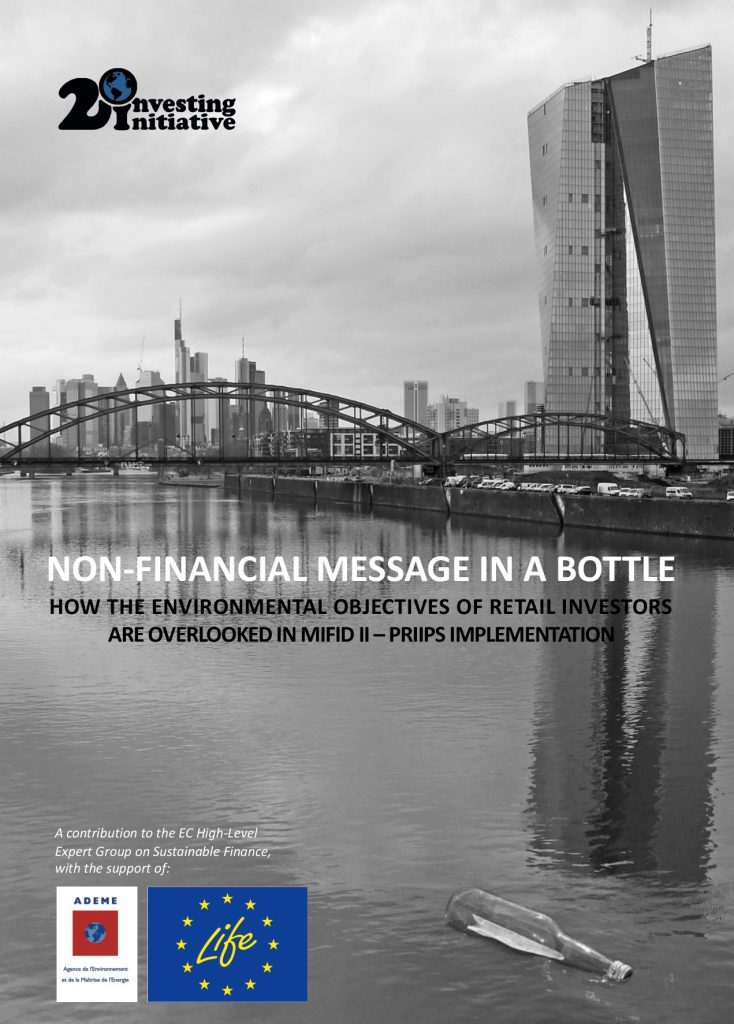Retail clients have non-financial investment objectives, but these are not discussed in client meetings.
Opinion polls clearly indicate the widespread existence of non-financial investment objectives among retail clients. However, analysis of current practices in client meetings and questionnaires used by mainstream retailers for client profiling, shows that non-financial investment objectives are hardly ever discussed. Even when discussed, the information is not recorded together with other information on the client’s needs and preferences. Clients’ non-financial investment objectives are like a message in a bottle: in most cases they will get lost and not reach their intended destination: taken into account for product selection and design. A standardised integration into client profiling is necessary. In Europe, the authors conclude that it can be achieved trough regulatory reforms (MIFID, PRIIPS) and public-private partnerships in developing the next generation of robo-advisors.
Regulatory analysis identifies options for including the discussion of non-financial investment objectives as a mandatory part of client meetings under the MiFID II Directive
The report analyses relevant provisions of the MiFID II Directive including related secondary regulation and guidelines. The aim is to understand the existing regulatory framework and the extent to which there is scope to include the discussion of non-financial investment objectives in financial advice from a regulatory perspective. The mandatory suitability assessment requires the discussion of the client’s investment objectives including his/her risk tolerance. While some clarification has been provided for the term “risk tolerance”, the term “investment objectives” is not further specified. An early analysis of the transposition of the directive into national laws in France, Germany, Austria, Sweden and the UK showed that the term “investment objectives” is not well defined on a national level either, and it remains unclear whether or not non-financial objectives are included. Draft transposition documents in further countries show a same approach. The ESMA Guidelines on Certain Aspects of Suitability Requirements, which clarify concepts used in MiFID that need further definition, are currently under review. These guidelines could be updated to include a clarification on the definition of the clients’ “investment objectives” which includes financial and non-financial investment objectives. Concrete wording for amending the guidance is proposed.


